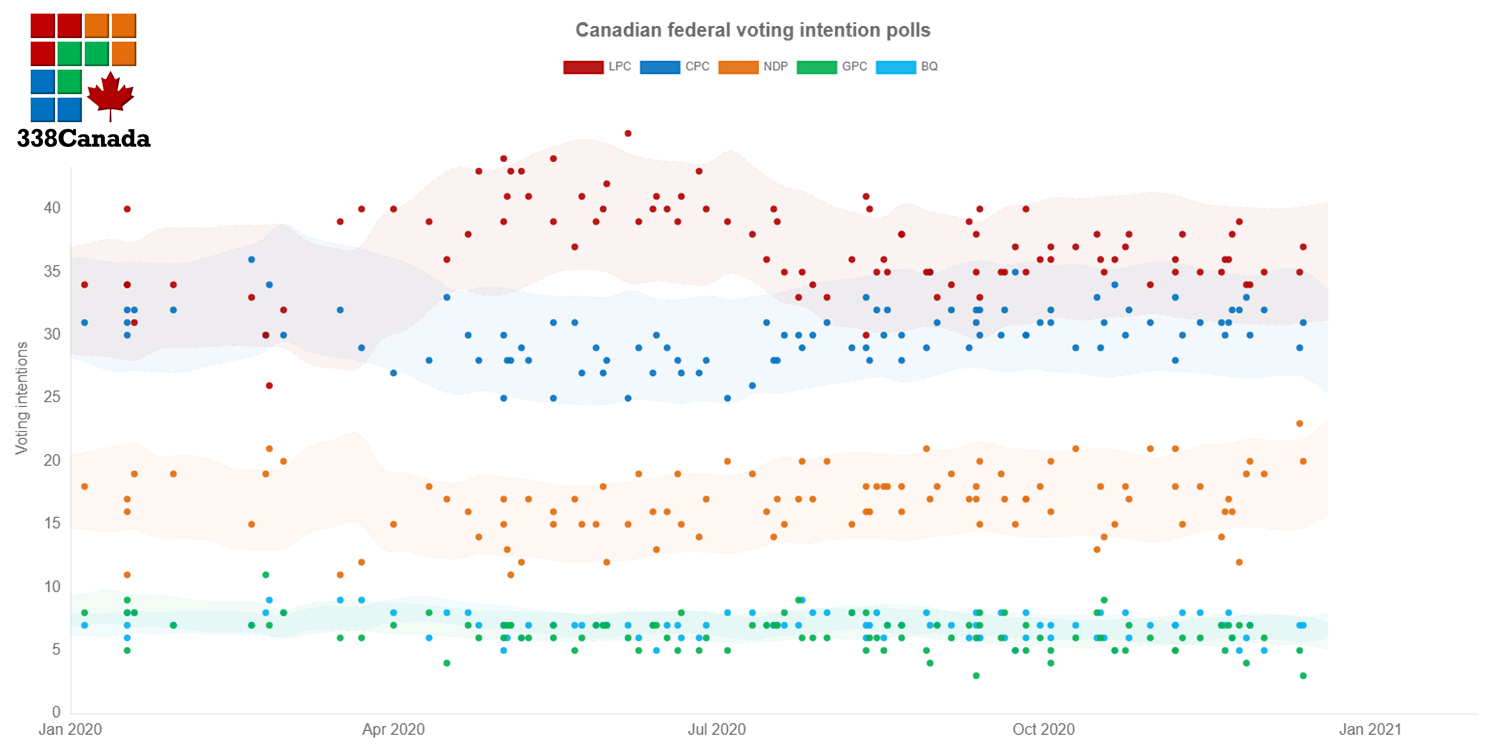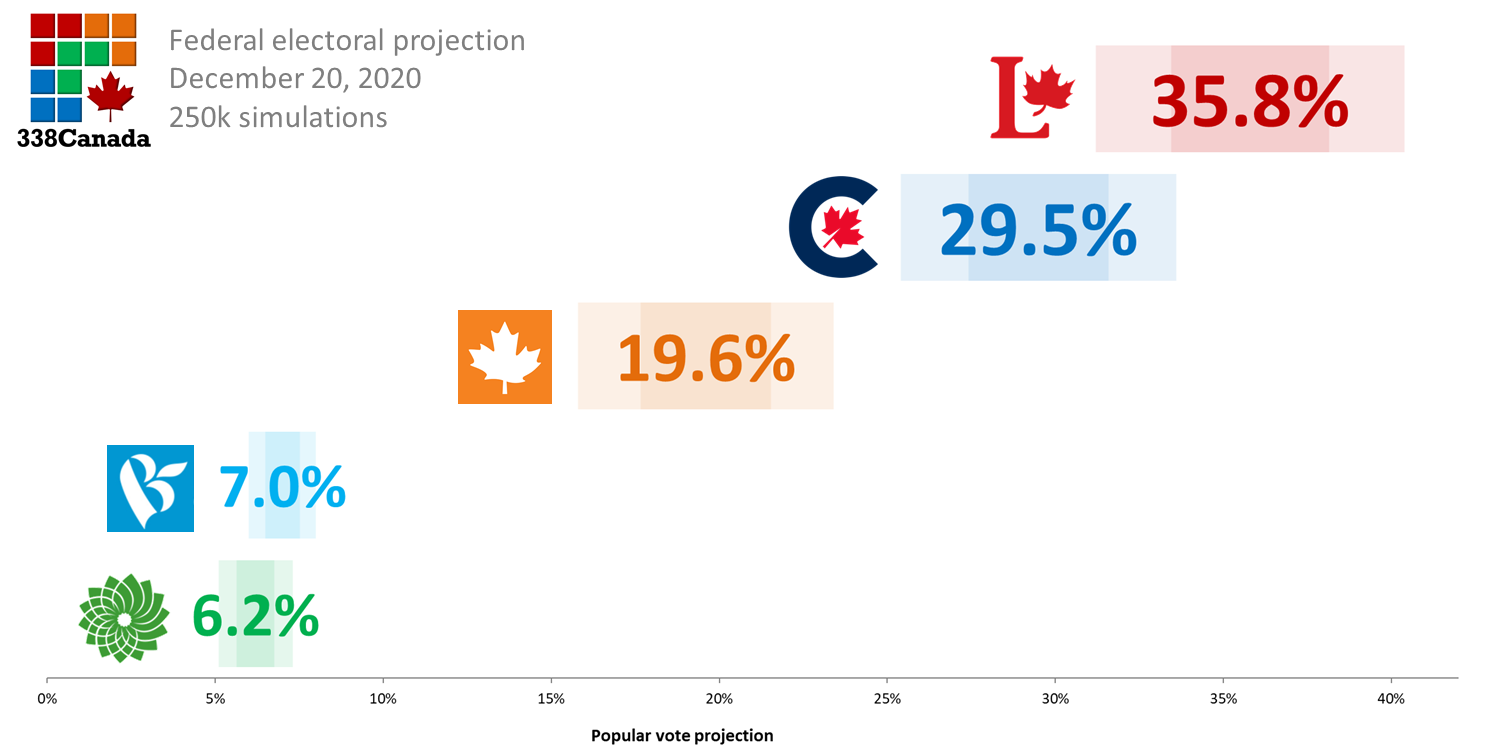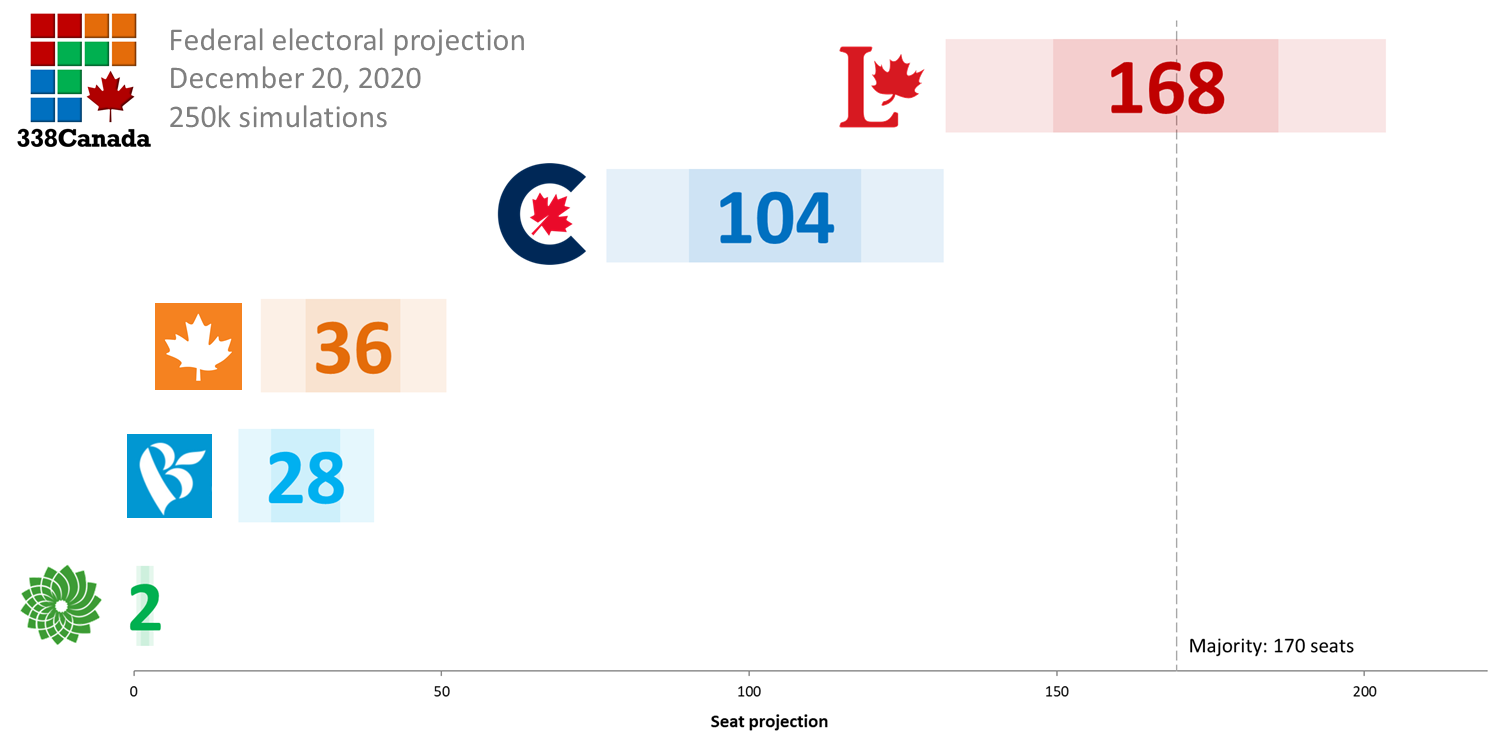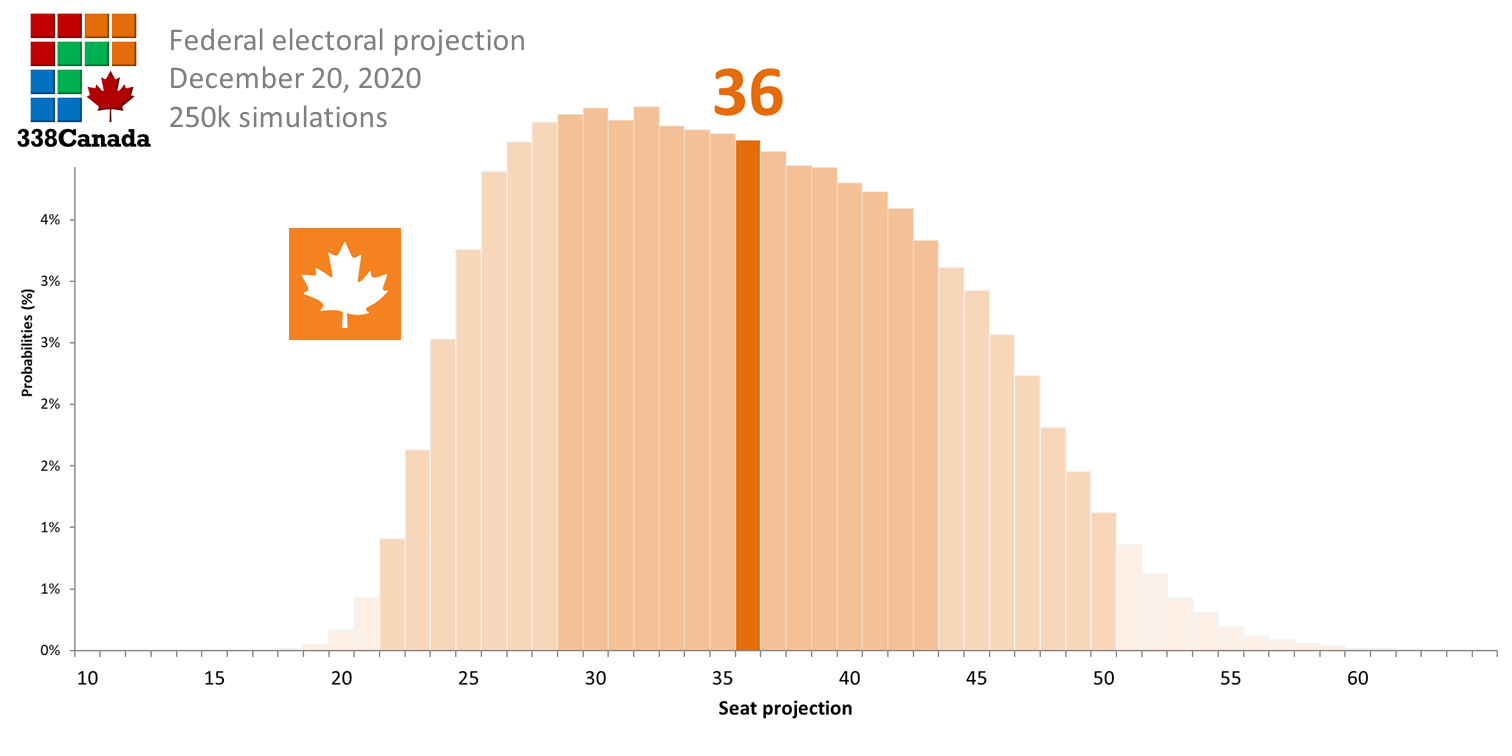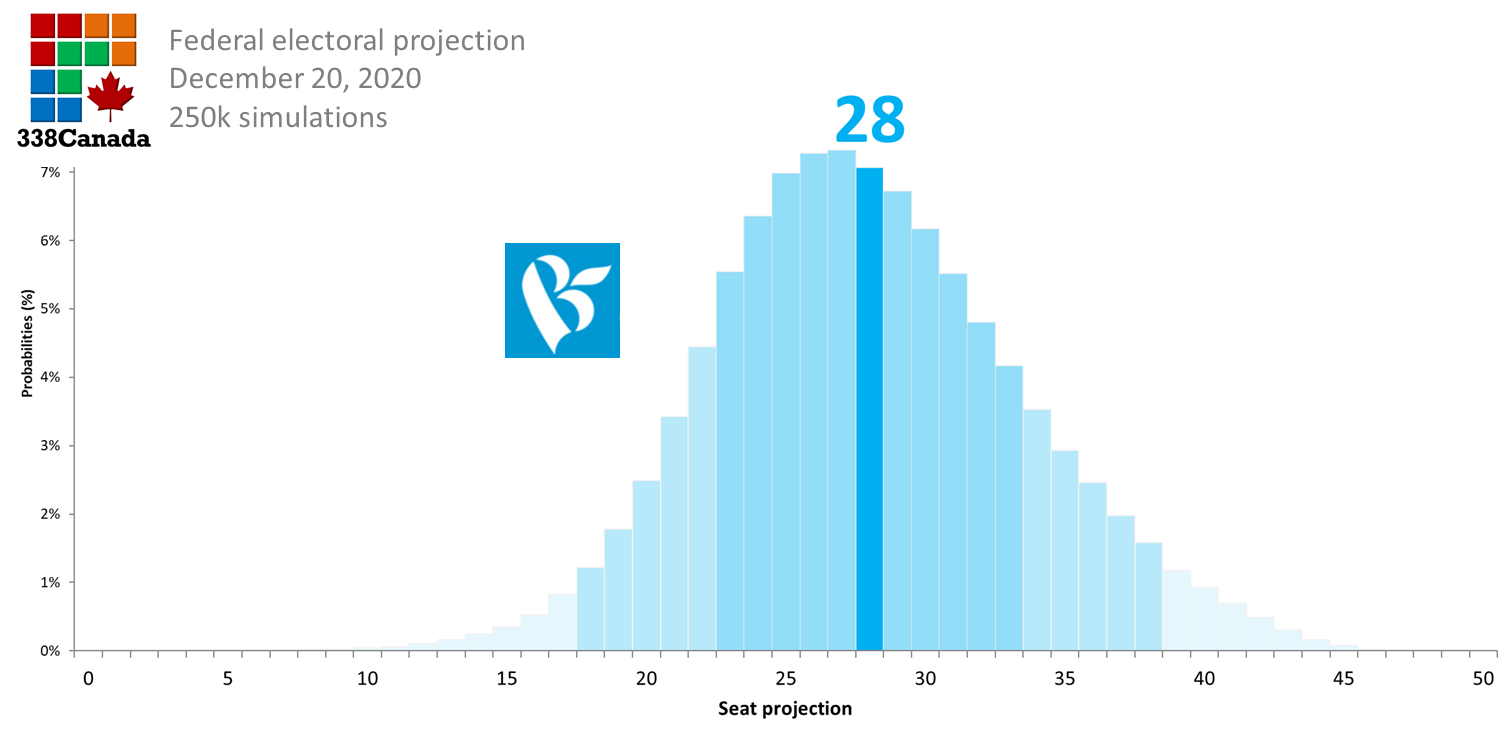338Canada: What the polls told us in 2020
Philippe J. Fournier: The Liberals escape 2020 holding a significant lead. The Tories still need a place to grow. And the NDP sees a flicker of promise.
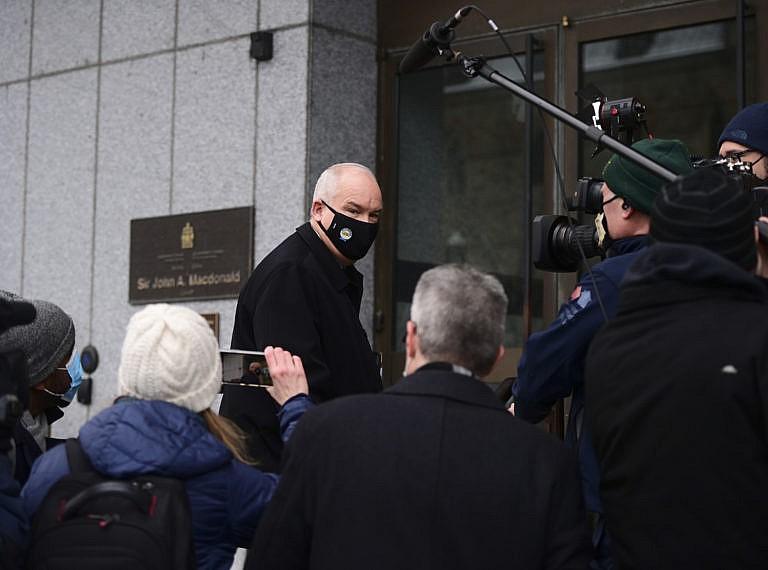
O’Toole arrives to a caucus meeting in Ottawa on Dec. 2, 2020 (CP/Sean Kilpatrick)
Share
From a purely political point of view, the year 2020 was a great year for incumbents in Canada. Case in point: In all three provincial elections held this year, all incumbents were re-elected to majorities. Also, aside from recent numbers in Alberta, satisfaction with provincial governments have remained high all throughout the first and second wave of the pandemic. In the spring, even as Quebec and Ontario had the worst infection rates in the country, Premiers François Legault and Doug Ford kept high satisfaction numbers (above 80 per cent for several weeks) with their constituents.
On the federal scene, satisfaction with the government’s handling of the pandemic has remained high throughout 2020. The latest figures from Léger showed a 66 per cent satisfaction rate nationally—a proportion that goes well beyond partisan lines—with rates at or above 50 per cent in every polling region of the country (yes, including Alberta).
Allow me to share a few data-based thoughts on where the main federal parties stand for this final 2020 column :
- What did the polls tell us this year? When the pandemic reached Canada’s borders in March, the Liberals and leaderless Conservatives were stuck in a statistical tie near their respective 2019 election results. Soon after, the Liberals jumped in the lead nation-wide, and rode this wave through the spring and early summer with a stable double-digit lead. But then July and August featured the WE Charity scandal/affair (depending on one’s point of view), which brought the Liberals down to Earth, but still the LPC kept the lead nationally. Since August, we have measured no significant movement for either the Liberals or the Conservatives (see graph below):
- The Liberals end 2020 with a narrow, albeit significant lead in voting intentions. I specify narrow, because the average LPC lead is currently 6 points, so even a modest polling error in favour of the Conservatives could transform this projection into a much closer race than forecasted. In the graph below, we notice the Liberal and Conservative national vote projections do overlap after all.
- Nonetheless, the Liberal lead is also significant for many reasons, one of them being the regional breakdown of the projection still heavily favour the LPC. Even though the Conservatives elected a new leader in Erin O’Toole back in August, they have yet been able to move the needle where the party needs the most: The CPC still trails the Liberals in Ontario by an average of eight points, and it remains a distant third in Quebec with an average of 17 per cent, far behind the Liberals (37 per cent) and the Bloc Québécois (28 per cent).
- Additionally, although the Conservatives won the popular vote in British Columbia in the 2019 election, their polling average in the province currently stands at only 26 per cent, in a statistical tie with both the Liberals and the NDP. With Alberta and most of the Prairies already locked in for the CPC, where would the Conservatives find enough winnable ridings to unseat the Liberals in a general election? Atlantic Canada also shows little potential to the CPC.
- Seat-wise, the Liberals end 2020 with enough support that either a strong(-er) minority or a razor-thin majority would be the most likely scenarios should current voting intentions translate into actual votes. The 338Canada model has the Liberals at an average of 168 seats, just below the 170-seat threshold for a majority at the House of Commons. The Conservatives slip to an average of 104 seats, their lowest projection since July.
- About the NDP: The latest polls have detected an upward trend for Jagmeet Singh and his team in December. Whereas the NDP had remained mostly stable around the 15 to 17 per cent mark all year (matching its 2019 election result), the most recent polls measured NDP support in the 19-23 per cent range. This modest but notable shift does not appear to have come from current Liberal supporters, but from potential Conservative and Green voters. These potential Orange-Blue and Blue-Green voters will be ones to watch in 2021.
- Time will tell whether this is a mere statistical blip or a new trend on the eve of 2021. Nevertheless, the NDP’s current 338Canada average is 20 per cent of the national vote and 36 seats—the party’s highest projection of 2020. As you can see on the seat probability density graph below, the NDP’s best case scenario with current levels of support even ranges in the high 40s to the low 50s in terms of seats.
- As for the Bloc Québécois, it maintained a level of support slightly under its 2019 results (32 per cent and 32 seats) throughout 2020. The rise in support for the Liberals that lasted through the spring and for most of the summer did not sink the Bloc, neither did the arrival of Erin O’Toole at the helm of the CPC, even though O’Toole did spend time and efforts courting the province in the fall—and was even a marquee guest on Tout le monde en parle, the popular Sunday night talkshow on Radio-Canada. In Quebec, the Bloc and the CPC are targeting similar demographics: soft nationalist voters that live in either rural or suburban Quebec. Winning over many of these voters would make the math of a CPC victory much simpler for O’Toole and his team.
- The Bloc ends 2020 with an average of 28 seats and just under 30 per cent of support in the province. Considering Yves-François Blanchet started his first campaign with popular support in the mid-teens back in August 2019 and ended one point short of the lead in Quebec on election night, many BQ supporters are hopeful the party could grow its support even more should a federal election get under way this coming spring.
- Finally, a word on the federal Green Party: new leader Annamie Paul lost her bid to win a seat in the House of Commons in October running in the generally safe Liberal seat of Toronto Centre, but she did gather more than 8,000 votes and a respectable 33 per cent of the vote. However, her leadership victory has failed to move the needle in favour of the GPC thus far, and lack of visibility in the political arena may hinder her own notoriety. Finding a new winnable riding could be a major challenge for Paul and the Greens in 2021 (unless a current Green MP resigns?). Which will it be? Guelph in Ontario? Beauséjour in New Brunswick, or maybe Charlottetown in P.E.I?
I would be remiss if I didn’t end this final 2020 column by thanking readers and fellow data nerds from coast to coast who comment, criticize and help improve the 338Canada project—especially readers in provinces where elections were held in 2020: New Brunswick, British Columbia and Saskatchewan. In these three elections, the 338Canada model correctly identified the winner in 91 per cent of all electoral districts. It would not have been possible without your continued support, and for this I thank you very kindly.
Merry Christmas, happy Holidays and I wish you all a safe and healthy 2021.
